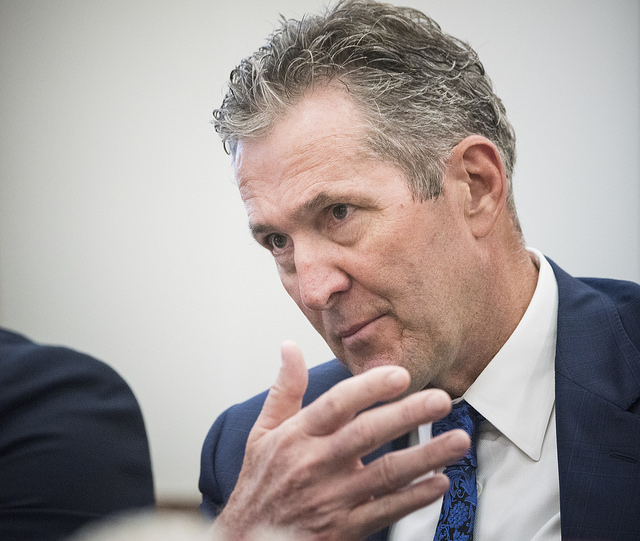Our ability to deliver on climate change and clean growth is strengthened when we act together. That’s why, on the heels of the 2015 United Nations Climate Summit in Paris, Canada’s First Ministers agreed to take ambitious and collective action to meet Canada’s greenhouse gas (GHG) emissions reduction target. Ensuing cooperation between federal, provincial and territorial governments and consultations with the public, businesses and civil society delivered Canada’s first ever truly national plan to act on climate change and enable clean growth: the Pan-Canadian Framework on Clean Growth and Climate Change (PCF) in December 2016. At the time of release, 11 provinces and territories signed onto the framework with only Manitoba and Saskatchewan choosing not to.
Happily, that changed on Friday when Manitoba’s Minister of Sustainable Development Rochelle Squires released a letter to the federal Minister of Environment and Climate Change Catherine McKenna declaring that Manitoba will join the PCF. This important announcement strengthens Canada’s ability to work together towards shaping its low-carbon future and unlocks significant resources for Manitoba to put towards this goal. As a sweetener for closing the deal, the province will be allocated $67 million from the Low Carbon Economy Leadership Fund. Access to this federal purse is a perk of signing on to the PCF, and helps ensure that provinces have support to achieve their climate goals.
This shouldn’t suggest that until now Manitoba had been inactive on climate change. In December 2015, the province released a Green Economy Action Plan with three emissions reductions targets: 33% below 2005 by 2030, 50% below 2005 by 2050, and carbon neutral by 2080. Further, the province unveiled its Climate and Green Plan in October 2017. The plan’s climate pillar has four keystones: investing in clean energy, putting a price on carbon, reducing emissions by sector, and adapting to climate change.
Carbon pricing is key
As under the PCF, carbon pricing is Manitoba’s key measure to reduce emissions. Manitoba intends to put a carbon levy on all fossil fuels and bring in an output-based carbon pricing system for large industrial emitters who are emissions-intensive and trade-exposed. This speaks to the widely recognized view that a broadly applied price on carbon is an effective and efficient tool to reduce GHG emissions at lowest cost to consumers and business while unleashing innovation.
However, Manitoba’s proposed approach to introduce a $25 per tonne carbon levy in 2018, and keep it frozen at that rate until 2022 doesn’t align with Canada’s carbon pricing benchmark. The latter requires a carbon price starting at a minimum of $10 per tonne in 2018, rising by $10 per year to $50 per tonne in 2022. Manitoba’s proposed approach will be in excess of the benchmark price until 2020; however, it will fall short between 2020 and 2022.
Manitoba claims that cumulative reductions under this approach will be higher than outcomes achieved under the benchmark. We would flag that the PCF’s ongoing success rests on provinces and territories’ sustained collective action; agreeing to special treatment risks eroding our sense of shared responsibility. But in this case, what Manitoba is asking for is already available to them. The PCF allows flexibility for provinces to apply the policy that better suits their specific situation. A rising carbon price provides a strong signal to enable changes in behavior and business practices today that will lead to short and long-term emissions reductions in line with the Paris Agreement. Alternatively, if provinces prefer, they can use a carbon cap that provides the certainty of cumulative reductions and allows for reductions to be pursued through complementary measures. Manitoba’s claims are not inconsistent with these options; if they judge that the federal carbon pricing schedule is not appropriate for their particular circumstances, they can set a carbon cap.
According to Canada’s latest projections, even if we apply all measures within the PCF, Canada will fall 66 Mt short of meeting its 30% reduction target by 2030 compared to 2005 levels. With this in mind, all PCF measures need to be fully implemented and with a view to ratchet up and strengthen over time, including a price on carbon.
Manitoba also posits in its 2017 Climate and Clean Growth Plan that the federal government’s pricing schedule ‘’would impose an intolerable financial burden on Manitoban families and businesses.’’ This is simply incorrect and ignores the proven tools that can protect families and businesses such as rebates (for example, similar to GST rebates) that preserve the incentive to reduce while protecting families and businesses. Well-designed carbon pricing systems achieve economic and environmental gains while addressing a region’s unique challenges associated with carbon pricing policies.
Irrespective of the province’s arguments, the federal government has stated that it expects Manitoba’s carbon price to meet the benchmark after 2020. Turning a blind eye to inadequate approaches risks unravelling the PCF’s hard-won consensus.
Manitoba’s Premier, Brian Pallister, laid out the following vision for the province: ‘’Manitoba will be Canada’s cleanest, greenest and most climate resilient province.’’
It is certainly encouraging to see high political will to tackle climate change. We applaud Manitoba for this step and look forward to following how the province will play a leading role in enhancing ambition towards closing the national emissions gap and shaping a future where the premier’s vision becomes reality.










